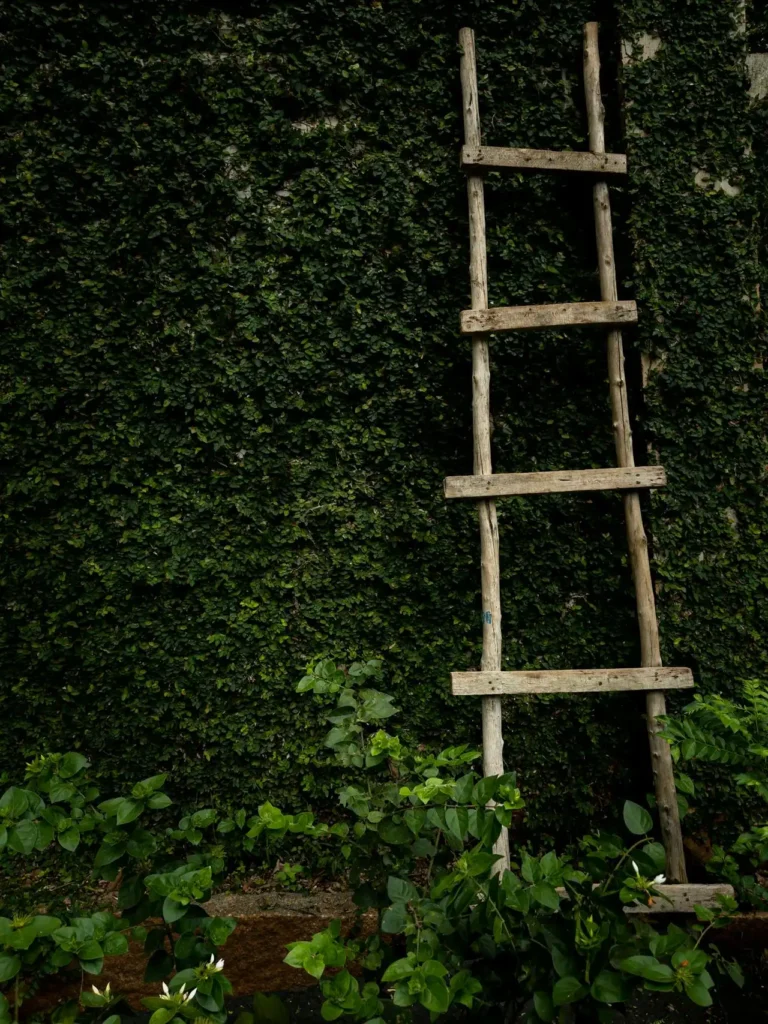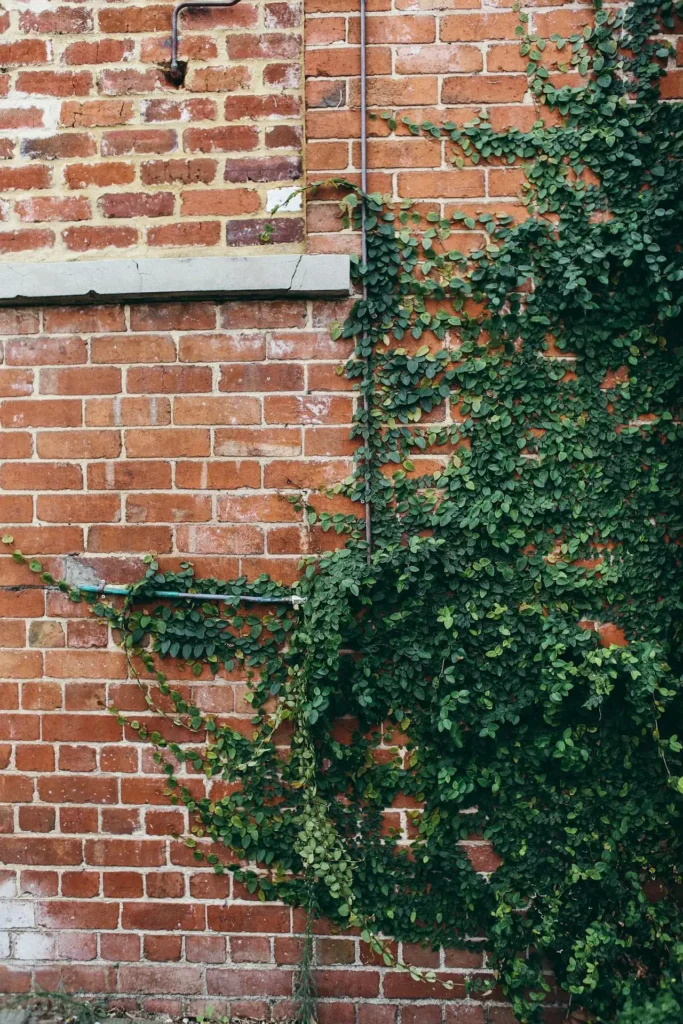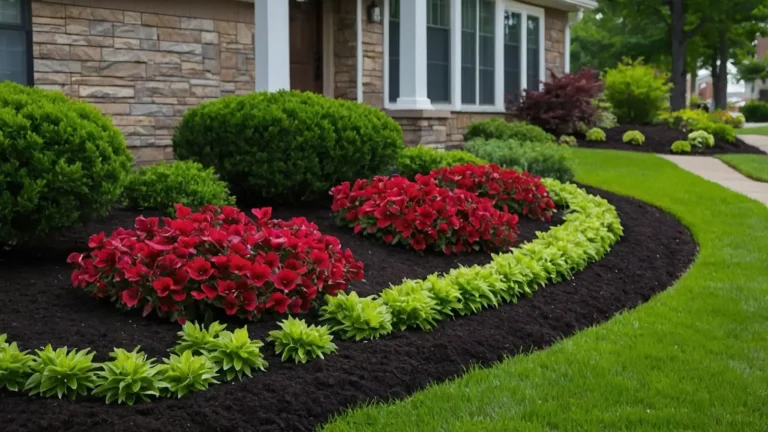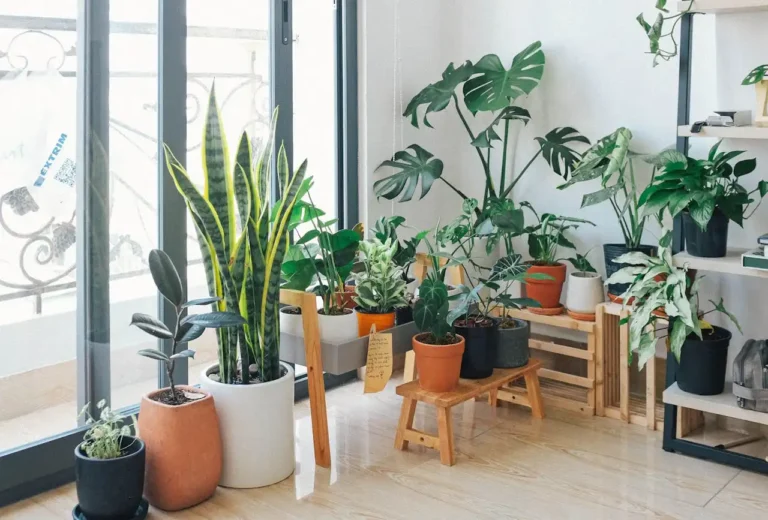How to Make a Vertical Garden Wall (Step-by-Step Guide)
You’ve probably admired those stunning living walls in modern offices and trendy restaurants. Now you can create your own vertical garden paradise right at home.
Vertical gardens transform blank walls into vibrant green spaces. They maximize your growing area while adding natural beauty to any indoor or outdoor space.
This comprehensive guide walks you through every step. You’ll learn to build, plant, and maintain your own thriving vertical garden wall.
Ready to turn that boring wall into a living masterpiece? Let’s dive in and get your hands dirty.
Planning Your Vertical Garden Wall

Choose the Perfect Location
Your vertical garden’s success starts with selecting the right spot. You need a wall that receives adequate light for your chosen plants.
South-facing walls typically get the most sunlight, making them ideal for sun-loving varieties.
Consider proximity to water sources too. Check your wall’s structural integrity before proceeding.
You’ll need easy access for regular watering and maintenance. Indoor walls near windows work wonderfully, while outdoor spaces like patios or balconies offer exciting possibilities.
Vertical gardens add significant weight, especially when watered. Ensure your chosen wall can support the additional load safely.
Measure and Design Your Space
Grab your measuring tape and assess your available wall space. Sketch your design on paper first.
Start small if you’re a beginner – a 4×4 foot section provides plenty of room for experimentation without overwhelming maintenance requirements.
Consider different plant heights, colors, and textures. You want visual interest and variety while ensuring each plant gets appropriate growing conditions.
Think about accessibility too. Place plants requiring frequent attention at eye level. Position low-maintenance varieties higher up where they’re harder to reach.
Select Your Vertical Garden System
You have several system options for your vertical garden wall. Modular panel systems provide more professional appearances.
Pocket planters offer affordable, flexible solutions perfect for beginners. These fabric or plastic pouches attach directly to your wall structure.
These interlocking pieces create seamless living walls with built-in irrigation options. They cost more initially but offer superior long-term results.
DIY wooden frame systems let you customize everything. You can build pocket systems using cedar boards and landscape fabric.
This approach saves money while giving you complete creative control.
Gathering Your Materials and Tools
Essential Building Materials
Your material list depends on your chosen system type. Don’t forget waterproofing materials.
For basic pocket planters, you’ll need heavy-duty landscape fabric, cedar or treated lumber for framing, and galvanized screws or bolts for assembly.
Modular systems come with most components included. You’ll typically need additional mounting hardware and possibly a water collection tray for runoff management.
Use marine-grade sealant behind your vertical garden to protect your wall from moisture damage. Vapor barriers prevent long-term structural issues.
Irrigation Supplies
Consistent watering makes or breaks vertical gardens. For smaller gardens, hand watering works fine initially.
Drip irrigation systems work exceptionally well for larger installations. You’ll need polyethylene tubing, drip emitters, and a timer-controlled valve system.
However, consider upgrading to automated systems as your garden grows. Manual watering becomes time-consuming with larger installations.
Include water collection systems in your planning. Runoff trays prevent water damage to floors or surrounding areas. These simple additions save you cleanup headaches later.
Tools You’ll Need
Gather standard carpentry tools for construction. You’ll need a drill with various bits, a level for straight installation, and a saw for cutting materials to size.
Keep measuring tools handy throughout the project. Safety equipment protects you during construction.
A tape measure, square, and pencil help ensure accurate cuts and proper alignment. These details matter for professional-looking results.
Wear safety glasses when drilling or cutting. Work gloves prevent splinters and improve your grip on materials.
Step-by-Step Construction Process

Step 1: Prepare Your Wall Surface
Start by cleaning your wall thoroughly. Remove any dirt, debris, or loose paint that might interfere with mounting.
A clean surface ensures secure attachment points for your vertical garden system. Install any necessary waterproofing behind your garden area.
Mark your mounting points using a level and pencil. Double-check measurements against your design sketch. Mistakes now require much more effort to fix later.
Apply marine-grade sealant or install vapor barriers according to manufacturer instructions. This step prevents expensive water damage down the road.
Step 2: Build Your Frame Structure
Cut your lumber to match your design dimensions. Cedar resists rot naturally, making it ideal for moist environments.
Sand rough edges smooth to prevent snagging on fabric or plants. Check corners with a square to ensure perfect right angles throughout construction.
Assemble your frame using galvanized screws or bolts. Pre-drill holes to prevent wood splitting.
Apply wood preservative or stain if desired. This step enhances appearance while extending your frame’s lifespan. Allow adequate drying time before proceeding to the next step.
Step 3: Install Mounting Hardware
Locate wall studs using a stud finder for secure mounting. Mark stud locations clearly before drilling. Your vertical garden’s weight requires solid attachment points for safety.
Drill pilot holes slightly smaller than your mounting screws. This prevents wall damage while ensuring tight connections. Use appropriate anchors for your specific wall type.
Test your mounting system’s strength before adding plants. Gently pull on the installed frame to verify secure attachment. Better to discover problems now than after planting.
Step 4: Attach Growing Medium Containers
Install your chosen planting system according to your design. Pocket planters attach with staples or screws along the frame edges. Ensure even spacing for consistent appearance.
Check that each planting pocket drains properly. Poor drainage kills plants quickly in vertical systems. Add drainage holes if necessary using a sharp knife or drill.
Test water flow patterns before adding plants. Pour water into upper pockets and observe runoff patterns. Adjust positioning if water doesn’t distribute evenly throughout the system.
Step 5: Set Up Irrigation Systems
Install your drip irrigation tubing if using automated watering. Run main lines along the top of your vertical garden, with individual emitters feeding each planting pocket.
Program your timer system for appropriate watering schedules. Test your irrigation system thoroughly before planting.
Most vertical gardens need daily watering during growing season. Adjust frequency based on plant types and weather conditions.
Run several cycles to identify leaks or blocked emitters. Fix problems now while access remains easy.
Selecting and Planting Your Vertical Garden
Choose Compatible Plants
Select plants with similar water and light requirements for each section. Focus on plants with strong root systems that handle vertical growing well.
Mixing plants with vastly different needs creates maintenance headaches and poor growing results.
Consider mature plant sizes when making selections. Small starts grow quickly in vertical systems. Leave adequate space for expansion to prevent overcrowding issues later.
Succulents, ferns, and many herbs thrive in vertical gardens. Avoid plants with extensive root systems that need deep soil.
Prepare Your Planting Medium
Use lightweight potting mix specifically designed for container growing. Add slow-release fertilizer to your potting mix before planting.
Heavy garden soil becomes waterlogged and damages vertical systems. Quality potting mix drains well while retaining appropriate moisture.
Vertical gardens leach nutrients quickly through frequent watering. Pre-mixed fertilizer provides steady nutrition throughout the growing season.
Consider mixing in coconut coir or perlite for improved drainage. These amendments prevent soil compaction while maintaining adequate moisture retention for healthy plant growth.
Plant Installation Techniques
Start planting from the bottom and work upward. This prevents soil spillage onto newly planted lower sections. Take your time with each plant for best establishment results.
Remove plants gently from their containers, teasing apart root-bound systems. Pack soil firmly around each plant without compacting excessively.
This encourages quick establishment in their new vertical environment. Damaged roots recover slowly in vertical systems.
Proper soil contact ensures good root establishment while maintaining drainage. Water immediately after planting each section.
Initial Care and Establishment
Water your new vertical garden thoroughly but gently. Monitor soil moisture daily during the first few weeks. Provide temporary shade if your plants show transplant stress.
Use a watering wand with a soft spray setting to avoid disturbing newly planted specimens. Harsh water pressure dislodges plants from their pockets.
New plantings need consistent moisture for proper root establishment. Vertical systems dry out faster than traditional garden beds.
A shade cloth reduces stress while roots establish. Remove protection gradually as plants adapt to their new environment.
Maintenance and Long-Term Care
Watering Schedules and Techniques
Establish consistent watering routines based on your plant selections and local climate.
Most vertical gardens need daily water during hot weather, less frequently during cooler periods.
Check soil moisture at different levels of your vertical garden. Upper sections typically dry out faster than lower areas.
Adjust watering duration to ensure even moisture distribution throughout the system. Watch for signs of over or under-watering.
Yellow leaves often indicate too much water, while wilting suggests insufficient moisture. Fine-tune your irrigation system based on plant responses.
Fertilizing Your Vertical Garden
Apply liquid fertilizer regularly throughout the growing season. Consider slow-release fertilizer pellets for low-maintenance nutrition.
Vertical gardens leach nutrients quickly, requiring more frequent feeding than traditional gardens. Use diluted solutions to prevent root burning.
These products provide steady feeding over several months. Reapply according to manufacturer recommendations for best results.
Organic options like compost tea work excellently in vertical systems.
These gentle fertilizers improve soil biology while providing plant nutrition. Apply weekly during active growing periods.
Pruning and Plant Management
Trim overgrown plants regularly to maintain your vertical garden’s appearance.
Aggressive growers can overwhelm neighboring plants if left unchecked. Regular pruning keeps everything balanced and healthy.
Remove dead or diseased plant material immediately. Vertical gardens’ close spacing allows problems to spread quickly between plants. Quick removal prevents widespread issues.
Replace struggling plants promptly with healthy specimens. Some plants simply don’t adapt well to vertical growing conditions. Don’t hesitate to try different varieties for better success.
Seasonal Care Considerations
Adjust watering schedules seasonally based on temperature and humidity changes.
Summer heat increases water needs dramatically, while winter growth slows and requires less frequent watering.
Protect tender plants during extreme weather events. Plan for seasonal plant replacements in your vertical garden design.
Temporary covers shield plants from harsh sun, wind, or unexpected frost. These simple protections prevent major plant losses.
Annual flowers and vegetables need replanting each season. Having a replacement plan keeps your garden looking its best year-round.
Troubleshooting Common Problems
Address pest problems quickly in vertical gardens. Aphids, spider mites, and other pests spread rapidly in close-growing conditions. Fix irrigation problems immediately when discovered.
Regular inspection helps catch problems early when treatment is most effective. Good airflow around plants prevents many common disease problems.
Manage fungal diseases through proper air circulation and watering techniques. Water at soil level rather than on leaves when possible.
Clogged emitters or broken lines stress plants quickly in vertical systems. Keep spare parts on hand for quick repairs when needed.
Advanced Tips and Variations

Creating Themed Vertical Gardens
Design herb walls for kitchen windows using culinary varieties like basil, oregano, and thyme.
These productive gardens provide fresh ingredients while adding natural beauty to your cooking space.
Succulent walls work wonderfully in dry climates or low-water situations. Consider seasonal color walls using flowering annuals.
These drought-tolerant plants create stunning displays while requiring minimal maintenance once established.
Plan plant selections for continuous blooms throughout growing seasons. These displays create dramatic focal points in any landscape.
Incorporating Technology
Smart irrigation controllers optimize watering based on weather conditions and soil moisture levels.
These systems prevent over-watering while ensuring plants receive adequate moisture automatically.
LED grow lights extend growing possibilities for indoor vertical gardens. Full-spectrum lighting allows successful cultivation in areas with limited natural light availability.
Moisture sensors provide real-time data about soil conditions throughout your vertical garden. This information helps fine-tune irrigation schedules for optimal plant health and growth.
Expanding Your Vertical Garden System
Plan modular expansions from the beginning of your project. Wheels or casters make repositioning simple.
Standardized mounting systems allow easy additions as your interest and space permit. Growing your garden gradually spreads costs over time.
Consider portable vertical garden panels for seasonal flexibility. Mobile systems move easily for optimal sun exposure or weather protection.
Connect multiple vertical gardens with shared irrigation systems for efficient maintenance. Centralized controls manage water distribution to multiple growing areas simultaneously.
Conclusion
Your vertical garden wall transforms ordinary spaces into living art.
With proper planning, quality materials, and consistent care, you’ll enjoy years of natural beauty and productive growing space.






